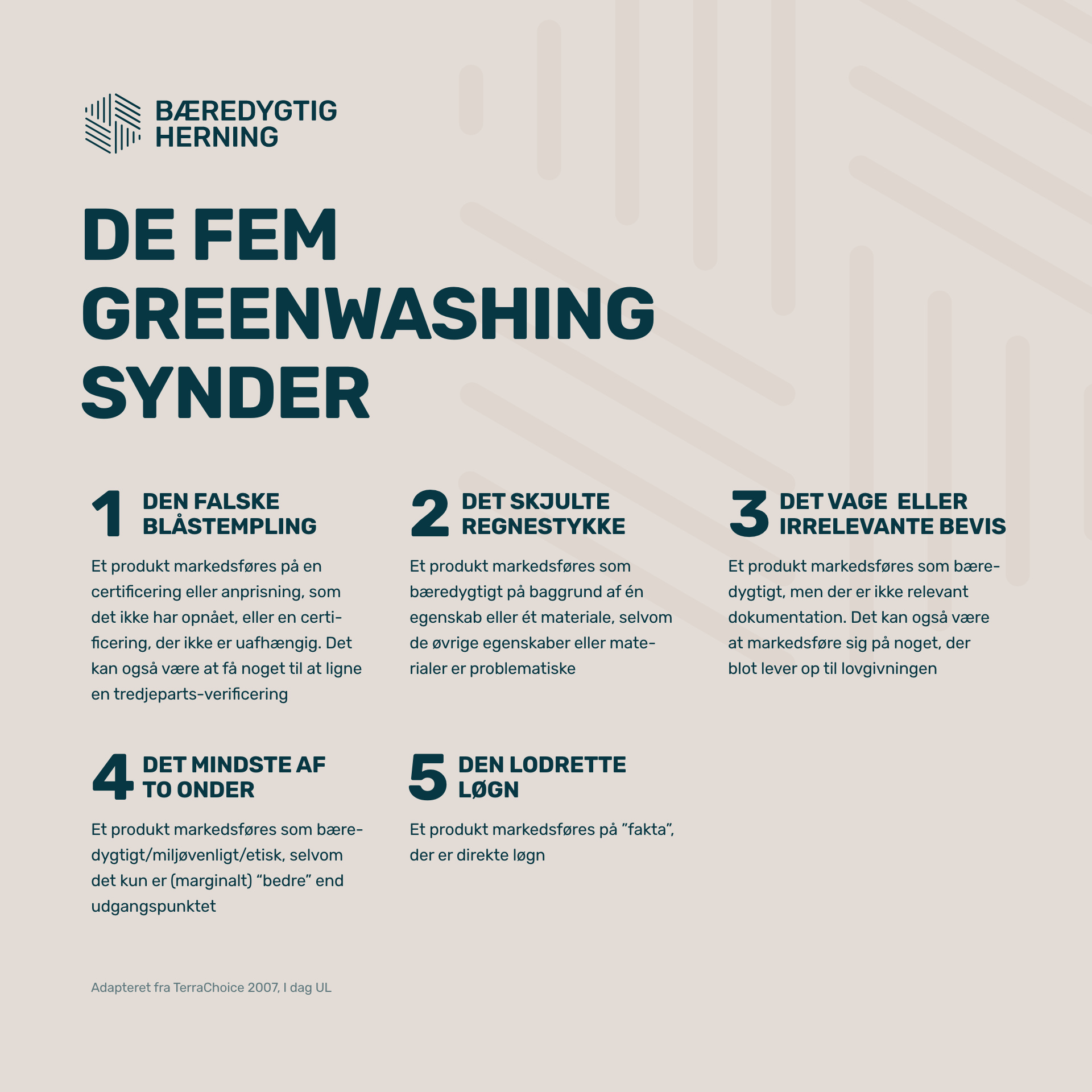Greenwashing is getting more and more attention these days. If you work in a company that wants to contribute to the development of society in a sustainable direction, how do you communicate that to your customers and partners?
How do you balance sharing the good stories within the company without falling into greenwashing? Is the solution to keep the stories to yourself, i.e., a strategy of greenhushing? Or is there a middle ground?
You should not call your products 'sustainable'
It is completely a no-go to label your products or your company as sustainable, because according to the Danish Consumer Ombudsman, it is "very difficult to call a product or service sustainable without misleading."
The Consumer Ombudsman refers to the classic definition in the Brundtland Report ("Our Common Future" 1987), where sustainability is defined as follows:
"En bæredygtig udvikling er en udvikling, som opfylder de nuværende behov, uden at bringe fremtidige generationers muligheder for at opfylde deres behov i fare."
”Vores fælles fremtid – Brundtland-kommissionens rapport om Miljø og udvikling” | 1987
At the same time, the Consumer Ombudsman emphasizes that companies must be able to provide valid documentation for claims about sustainability, which "is based on a life cycle analysis that shows the company is not undermining future generations' ability to meet their needs." (Consumer Ombudsman's "Quick Guide to Environmental Marketing for Businesses," 2021: p. 10).
Avoid the five greenwashing sins
It can feel like a bit of a jungle when it comes to communicating about sustainability.
Therefore, we have gathered five greenwashing sins that you can at least use as a guideline to avoid greenwashing.

How to communicate about sustainability?
If you can't call your products "sustainable" and you try your best to avoid the five greenwashing sins, what are the best ways to talk about your efforts?
Here are some concrete tips:
-
Move from general to specific claims
Instead of saying "sustainable materials," say "organic cotton," "made from recycled fishing nets," "FSC-certified wood," or similar—be clear about what you are specifically referring to. -
Always have documentation for your claims
If you claim to ensure good working conditions for the people in production, provide documentation of what that entails and report on progress. If you want to reduce CO2 emissions, document the progress. One way to ensure valid documentation is through certifications like B-Corp and Cradle-to-Cradle. -
Know the legislation
Although many might not be aware, we actually have legislation that describes how you are allowed to communicate about sustainability (it was passed as early as 2014: "Consumer Ombudsman's Guidelines on the Use of Environmental and Ethical Claims"). If you follow the two points above, you're already well on your way to complying with legal requirements. -
Only use statements about goals and visions if you have concrete action plans
It may sound impressive to set a large, visionary goal for 2030 or 2050, but it is important that the goals and visions are backed up by action plans that show step-by-step how you plan to achieve them. If there are areas where you're still unsure, be transparent about it. The goal is to present as well-documented and transparent data as possible. -
Drop carbon tunnel vision
In some sustainability communication, CO2 reduction is central—and it is important—but it is not the only factor in sustainability efforts. Sustainability is a holistic concept, which means we must both meet human needs (food, water, shelter, education, political influence, etc.) and also protect the Earth's resources so we don't exceed planetary boundaries (such as too high CO2 concentrations in the atmosphere, air pollution, ocean acidification, biodiversity loss, etc.). Read more, for example, in Kate Raworth's "Doughnut Economics."

